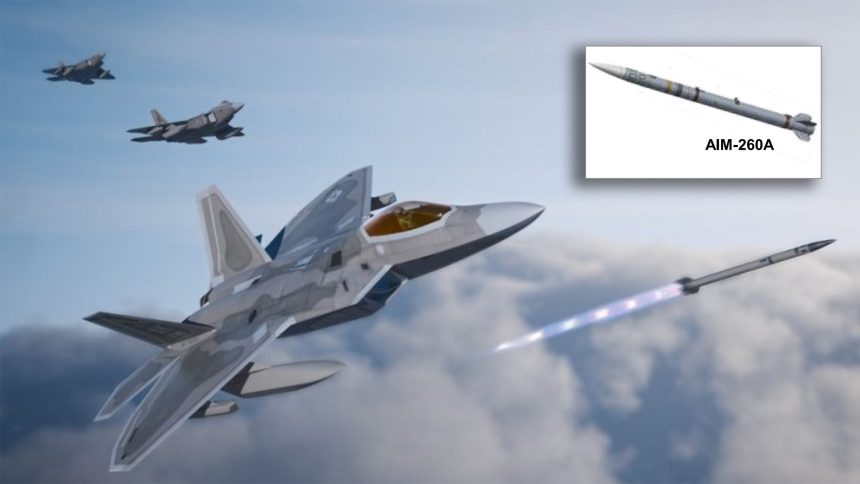The external shape of the AIM-260 seems to be the same we already saw in 2022 when the U.S. Air Force announced the F-22 upgrades. It remains to be seen whether it’s just a notional design or the external shape of the real weapon.
The Naval Air Systems Command (NAVAIR) may have publicly unveiled the shape of the AIM-260A JATM (Joint Advanced Tactical Missile), the next-generation air-to-air missile currently being tested by the U.S. Air Force. The unveiling was part of a list of products of the Air-to-Air Missiles Program Office (PMA-259) included in the portfolio overview of the Program Executive Office, Unmanned Aviation and Strike Weapons (PEO [U&W]).
The highly secretive AIM-260 JATM was shown alongside other products from PMA-259, such as the AIM-9M/X Sidewinder, AIM-120 AMRAAM, RIM-7M/P and the recently revealed AIM-174B. However, the use of the conditional is mandatory here as JATM has never been shown in photos, thus we cannot still completely rule out the possibility that the NAVAIR publication only included a notional design instead of the actual one.
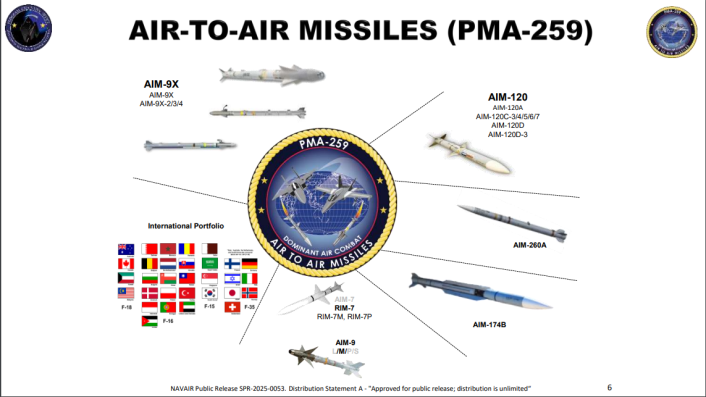
The JATM’s render
The new render is peculiarly familiar. In fact, it is almost identical in shape to an unknown missile depicted in a render from 2022, which showed three F-22A Raptors with new pods and fuel tanks, with one jet firing a new missile. This was an official U.S. Air Force artwork shared in a post about the 15th anniversary of the approval of the first F-22 flight demonstration, announcing new upgrades for the Raptor.
The render of the new missile features a fuselage that is quite similar in shape to the AIM-120. According to the few known details, the AIM-260 should have a size comparable with the AIM-120, allowing easier integration on existing platforms.
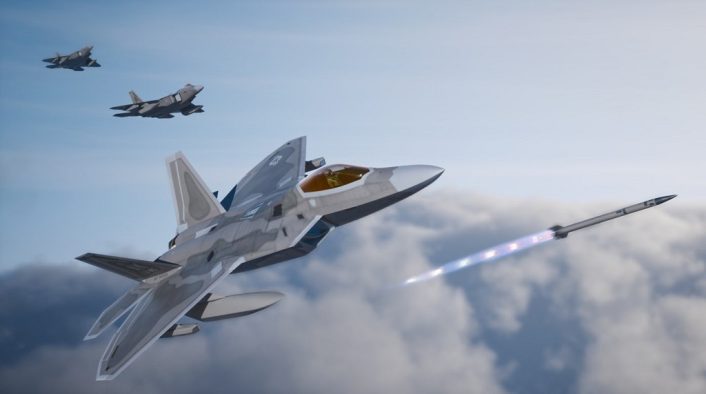
An aspect that immediately catches the eye in the rendering is the lack of the mid-body control surfaces which are present on the AIM-120, which are typically used for enhanced aerodynamic stability and maneuverability. The render also shows four trapezoidal control surfaces located at the rear of the missile, which are quite similar to those of the AIM-120.
The markings on the rendering appear to show a much larger rocket motor section compared to the AIM-120. That would be consistent with the much longer range expected from the AIM-260, with a minimum threshold range reportedly set at 100 miles (190 km), and a rumored new solid rocket motor to obtain the longer range.
This rendering is already drawing comparisons between the AIM-260 and the Chinese PL-17 (‘PL-17’ is a speculative designation, and it has also been referred to as the PL-21). The characteristics of the missile make it look, at least externally, similar to the PLAAF’s massive PL-17.
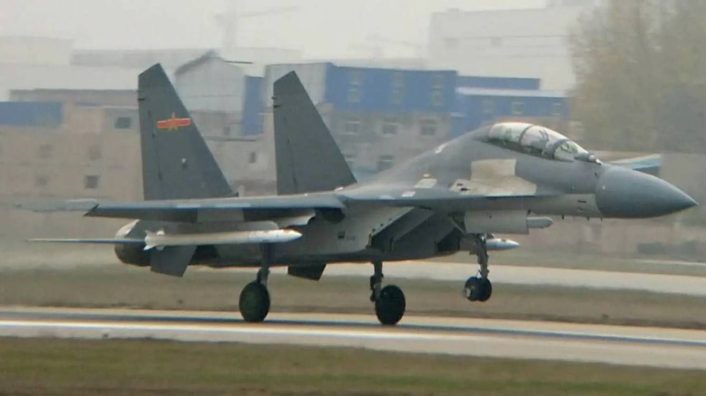
However, since it is expected to fit in the weapons bays of the F-22 and F-35, the AIM-260 will be significantly smaller than the PL-17. In fact, as mentioned earlier, in November 2021, it was revealed that the JATM will have dimensions similar to the AIM-120, which is 12 feet long with a fuselage diameter of 7 inches.
What else do we know about the JATM?
The existence of the JATM was first revealed in 2019 by the Air Force, who is jointly developing the missile with the Navy. However, it was also revealed that the program had been ongoing for more than two years in 2019, meaning the program might have started in 2017 or earlier.
The missile is being developed and produced by Lockheed Martin in partnership with the two services, and it is expected to replace or supplement the AIM-120 AMRAAMs currently in service. In the Navy, it would also replace or supplement the new AIM-174B, the air-launched variant of the SM-6.
In most likelihood, its development started to counter the PLAAF’s advances in missile technology, such as the abovementioned PL-17 and other missiles like the PL-15. In fact, Air Force officials have publicly stated that the appearance of the PL-15 in 2016 was the one of the driving factors that kick-started the JATM program.
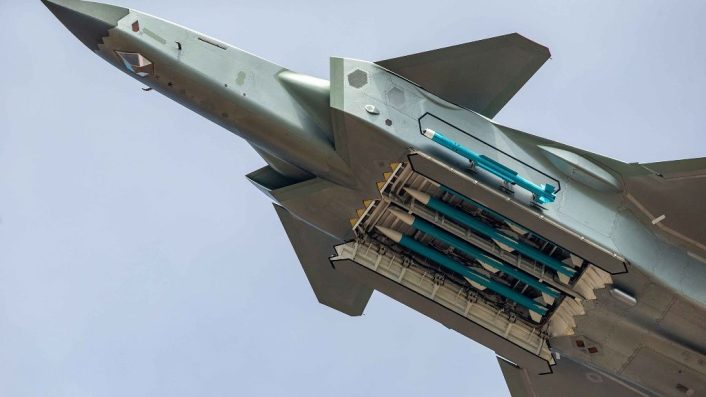
However, we do not know much else about the program, which is classified as a Special Access Program (SAP). In fact, it is so secretive that, in Fiscal Year 2020, a €6.5 million budget was approved for the construction of a custom storage vault for the missiles at Hill AFB.
The weapon’s specifications, such as its range, are still completely classified, although some expect it to outrange the previous AIM-120Ds by a significant extent. The JATM is expected to be already in production.
The flight testing of the AIM-260 began as early as 2020, according to documents that mentioned it being used against QF-16 target aircraft, and progressed under tight security. According to former Secretary of the Air Force Frank Kendall, the JATM was planned to enter the production phase in 2023, however the actual status of the program remains unknown.

